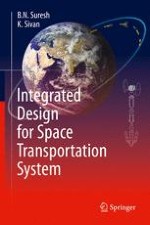2015 | OriginalPaper | Buchkapitel
4. Space Transportation Requirements and Launching of Satellites
verfasst von : B. N. Suresh, K. Sivan
Erschienen in: Integrated Design for Space Transportation System
Verlag: Springer India
Aktivieren Sie unsere intelligente Suche, um passende Fachinhalte oder Patente zu finden.
Wählen Sie Textabschnitte aus um mit Künstlicher Intelligenz passenden Patente zu finden. powered by
Markieren Sie Textabschnitte, um KI-gestützt weitere passende Inhalte zu finden. powered by
